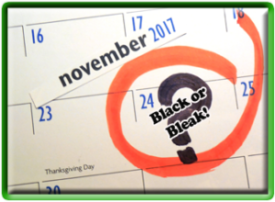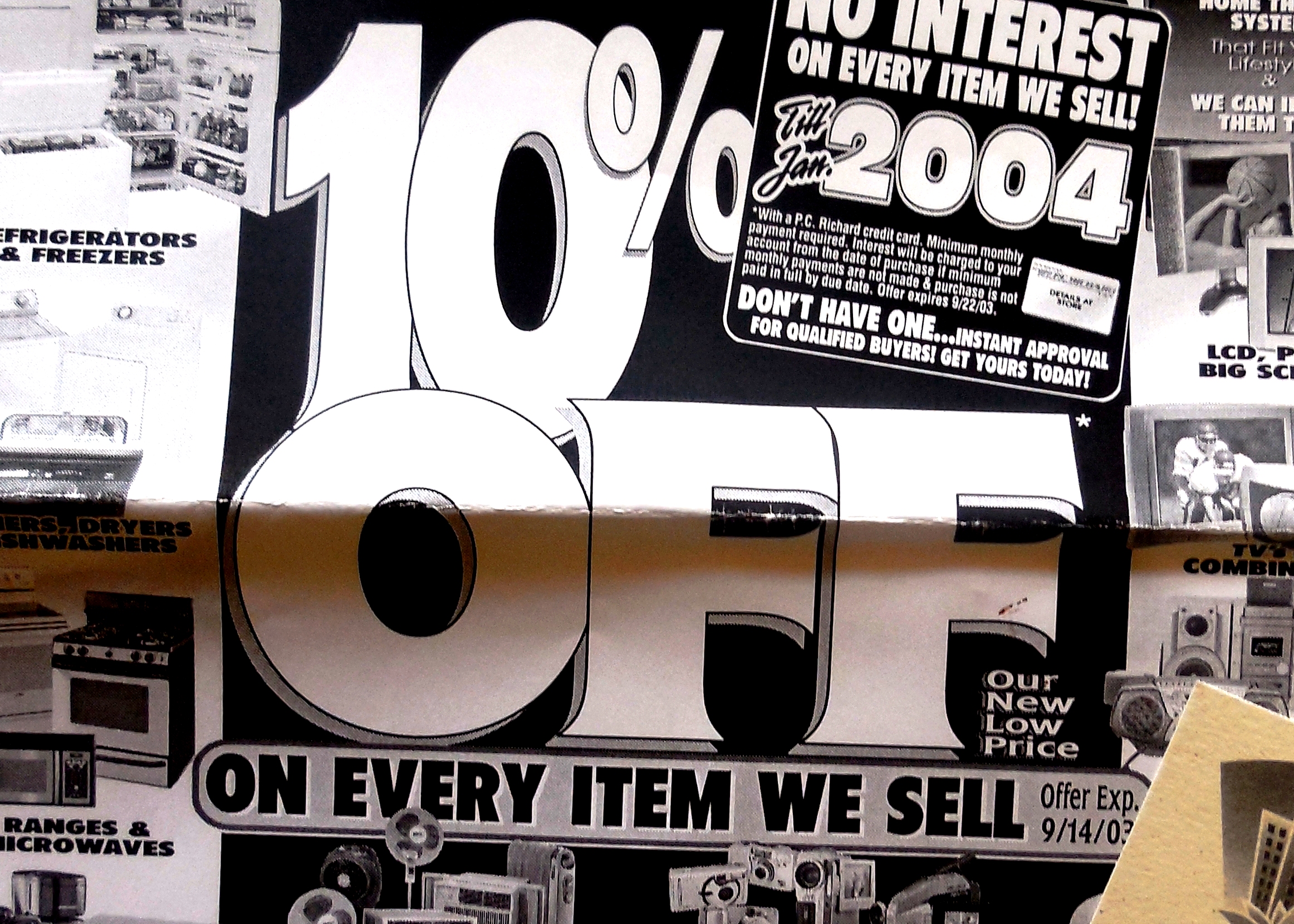
Retail’s Black Friday has been around since merchants went from red to black on their sales ledgers around the Friday after Thanksgiving. There was a time that Black Friday sales were like the icing on a cake, topping off a successful year or surviving another year, and customers waited with dreams of savings on this very special day: today customers have seen one day sales turn into preview day and day after sales and so has Black Friday expanded. Black Friday has become the expected not the phenomena for both consumer and marketer.
As with all great advertising and marketing campaigns some remain timely and others go. Just a few decades back it was O% financing and 10% off!

Over time certain campaigns seem to always work: Grand Openings, Birthday, and Going out of Business sales. This all went well through the 1900’s; and with the start of the new millennium it all has changed. Our buying habits have changed and so has the marketplace.
Many of you may remember the effects of; multi-sectioned newspapers, cable television, paid for radio, on the way merchants went to market. Today we are reached with new and very different delivery sources and media “the internet and social media”. Advertisers and marketers don’t control e-commerce audiences and today you can go directly to your audience without traditional media. It is no longer “Location, Location, Location, its Audience, Audience, Audience for many successful businesses.
One thing that has remained constant is that there is only a certain amount of money divided among the merchants in the market place. This money is spent as consumer see fit. The 2017 Holiday Season is unique, there are 5 weekends between Thanksgiving and Christmas, 31 Shopping days and the stronger influence of e-commerce and cyber Monday.
In 1863 President Lincoln declared Thanksgiving would be celebrated on the Fourth Thursday of November as a way to unite the nation. In 1939, 1940, and 1941 President Roosevelt moved Thanksgiving to the third Thursday of November to lengthen the shopping season; that was quickly rescinded when congress acted in 1941. The fact is the holiday season ranges from 26 days to 32 days. My experience indicated that although the amount of days to shop is important, 4 or 5 weekends has a greater effect on traditional retail with a 1 week lull after Black Friday and a very strong last weekend of sales before Christmas day. Another factor is that within the weeks between Thanksgiving and Christmas was a Chanukah Bump during the 8 day celebration. The 5 weekend season also creates a 5 weekend campaign as opposed to 4 this certainly can affect profits and the bottom line.
This year “Amazon Days” success proved that targeted audience marketing is a force to reckon with. Retailers are aggressively positioning themselves to capture their share of the holiday season. Consumers are checking the ads, the internet, and are prepared with smart technology devices. Statistics’ will declare the winners and losers of the 2017 Holiday Season and the evolution of the market place will continue…So Black or Bleak lets all hope the spirit of the Holidays Lives On…
By the way “Yes Virginia there is a Santa Clause”

All the best for a Happy, Healthy Holiday Season & New Year 2017 alan b. meschkow
follow me on: